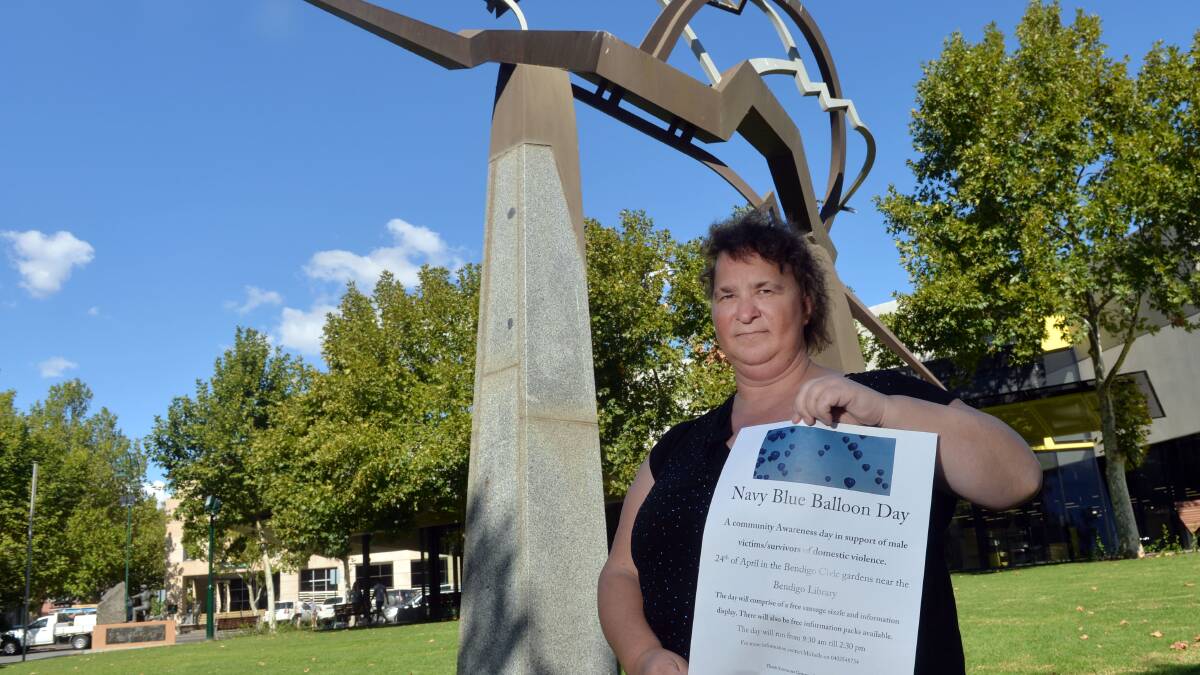
Subscribe now for unlimited access.
or signup to continue reading
THE parallels of domestic violence against women and men are eerily similar - feelings of isolation, being trapped, walking on eggshells, the mental abuse that lingers long after the fact.
But it's the male victims who are mostly unheard of - the forgotten statistics.
There are no clear records on how many men fall victim, but with women making up 90 per cent of all domestic violence cases, thousands of Australian men remain in the grips of abuse.
And often there is archaic response of victim blaming and lack of support for those men suffering, one Bendigo women says.
"It's like we have progressed from the 1970s. Violence is not acceptable against women but the stigma remains for many men," Michelle Kervill said.
"They are ridiculed, not believed - even asked what they did to cause the violence against them.
"So not only is there a damaging power imbalance in the relationship, they are being blamed for something that isn't their fault."
Domestic violence is often a two-way street of abuse, with researching showing that 50 per cent of violence in the home is mutual, bilateral violence.
But that leaves 50 per cent of cases with a clear victim - someone who needs specific help and services in the wake of violence.
Ms Kervill - who was herself a victim of domestic violence - said her husband was left with nowhere to go after he was abused by a previous partner.
She says it rings true of many male cases.
As it stands, there are limited shelters and legal services available for male victims.
One in Three Campaign senior researcher Greg Andresen says males stay "off the radar" and are often left stranded when escaping from abuse.
The campaign takes its name from a 2006 Australian Bureau of Statistics Personal Safety Survey that found 29.8 per cent of the victims of current partner violence since the age of 15 were male.
"The belief that all victims are women just isn't true - in fact one in three victims are males," he said.
"We 100 per cent promote services for women, they need more.
"But we feel male victims aren't spoken about enough - there is a taboo and stigma - and this prevents men from speaking up.
"And there are limited services when they do speak up - there aren't shelters or legal aid services.
"Those services aren't there yet for men."
St Luke's Anglicare senior manager of community programs Phil Eddy says only a small number of contacts at the centre are from male victims of family violence.
He said about 40 male victims sought help at the centre last year, with about 80 to 90 per cent of cases having a male perpetrator.
"We know the vast majority of victims are women and the priority definitely has to be with them," he said.
"Our victims assistance program does offer support for males too but the main priority is women."
Mr Eddy said there were some blockages of men seeking help.
"Often they are reluctant to go to the police and sometimes when they do, they don't show up for appointments," he said.
"It is part of the culture of blokiness and feeling they need to fit into the manly agenda.
"But the services are confidential and people can feel safe."
Ms Kervill is organising the Navy Blue Balloon Day which focuses on the need for greater support for men.
"There has been a backlash from several community members in Bendigo about what we're trying to do," Ms Kervill said.
"People say we are trying to take services away from women, but we're saying that it needs to change from a gender biased approach to a gender inclusive approach.
"Rather than saying it is always a male who is perpetrating, we need to look at violence as violence.
"It needs to stop, no matter who the victim is."
The event is on April 24 from 9.30pm at the Bendigo Civic Gardens.

